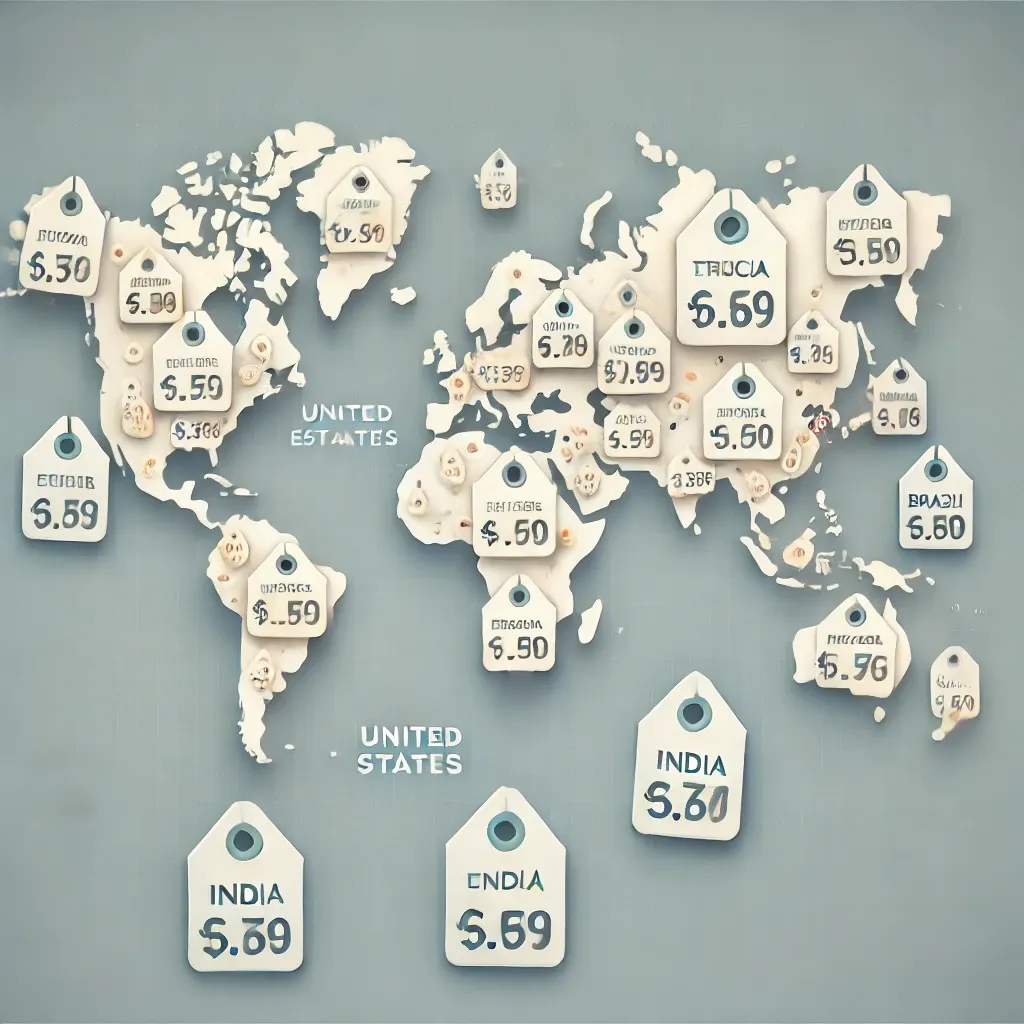
What is Regional Pricing? A Beginner’s Guide to Adapting Your Prices Globally
Table of Contents:
- Introduction: What is Regional Pricing?
- Why Do Businesses Need Regional Pricing?
- Examples of Global Brands Using Regional Pricing
- How to Calculate Regional Pricing with Our Tool
- Conclusion: Start Using Regional Pricing for Global Success
1. Introduction: What is Regional Pricing?
Regional pricing is a strategy where businesses set different prices for the same product or service depending on the geographical location of the customer. This allows companies to adapt their prices based on the economic conditions, purchasing power, and local competition in various regions. Rather than offering a uniform price globally, businesses can align their pricing with local market realities, boosting accessibility and profitability.
For instance, a product priced at $50 in the U.S. might be adjusted to $30 in a region with a lower average income to reflect local economic conditions.
2. Why Do Businesses Need Regional Pricing?
Implementing regional pricing offers several advantages for businesses operating across different markets:
Adapting to Local Purchasing Power: Not every region has the same level of economic strength. Regional pricing helps businesses align their prices with the buying power of local consumers, making products affordable across diverse markets.
Remaining Competitive: Different regions have unique market dynamics and competitors. By tailoring your prices to local conditions, you ensure your products remain competitively priced.
Boosting Customer Satisfaction: Customers are more likely to purchase products they feel are fairly priced for their region. This leads to higher customer trust and loyalty.
Maximizing Revenue: Setting one global price could mean lost revenue from regions willing to pay more. Regional pricing helps businesses capture more value in higher-income regions while remaining accessible in lower-income areas.
3. Examples of Global Brands Using Regional Pricing
Many leading brands have successfully adopted regional pricing. Some examples include:
Apple: The iPhone is sold at varying prices across different countries, reflecting local taxes, duties, and purchasing power.
Spotify: This music streaming platform adjusts its subscription fees according to the economic realities of each region, ensuring users around the world can afford their services.
Steam: A leading digital game store, Steam, uses regional pricing to make its game library accessible to gamers in various economic regions.
4. How to Calculate Regional Pricing with Our Tool
Calculating regional pricing can be complex, but our Worldwide Pricing Tool simplifies the process. Here’s how you can get started:
Enter Your Base Price: Start by inputting the price of your product in your home market.
Adjust for Costs and Profit Margins: Include product costs and desired profit margins to ensure you remain profitable across regions.
Review Your Regional Price Recommendations: Our tool will generate optimized prices tailored to each market, considering factors like local purchasing power, taxes, and competitive pricing.
5. Conclusion: Start Using Regional Pricing for Global Success
Regional pricing is a powerful strategy that allows businesses to succeed in multiple markets by offering fair, competitive prices that reflect local conditions. With our Regional Pricing Calculator, you can easily adjust your prices for different regions and ensure your products are both affordable and profitable worldwide.
Get started today and unlock the potential of regional pricing for your global business!
Written on: Sep 9, 2024